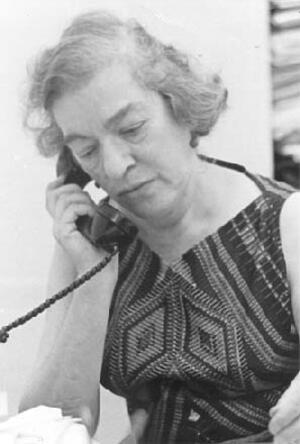Mollie Orshansky
Mollie Orshansky was my good friend and esteemed colleague at the Social Security Administration where we both worked. Over the course of her long life – she lived until the age of 91 – Mollie was very smart, independent, and a hardworking government employee. She was called Miss Poverty because she developed the poverty index widely used by the Federal government as a basis for benefit programs involving low income individuals and families.
Mollie attended Hunter College and majored in mathematics and statistics. She continued her graduate studies in economics and statistics at the Department of Agriculture Graduate School and American University.
Mollie developed the poverty index for 1963 while employed with the Social Security Administration. She used poverty thresholds based on the Agriculture Department's cheapest of four food plans that constituted nutritionally adequate diets designed for temporary or emergency use when funds are low. She took a hypothetical average family spending one third of its income on food, assuming that it had to cut back on its expenditures sharply, with spending for food and non-food items cut back at the same rate.
Mollie calculated the thresholds by family size, farm and non-farm status, sex of family head, the number of children in the family, and by aged and non-aged status. In total, there were 124 poverty thresholds. In 1965, a year after the Johnson Administration had initiated the War on Poverty, The Office of Economic Opportunity adopted Mollie's poverty thresholds as a working definition of poverty.
Over the years since Mollie developed the poverty thresholds, there have been several attempts to revise them, mainly to take into account the increases in the in the cost of living. However, only minor changes in the poverty thresholds have been made since Mollie developed them in 1963.
Mollie received the Distinguished Service Award in 1976 in recognition of her leadership in creating the first nationally accepted measures of income adequacy and applying them to public policy. She wrote and published many papers, monographs, and technical papers describing the measurement of the poor in the United States that appeared in the Social Security Bulletin and other journals. She also received many honors from the Social Security Administration, the American Statistical Association, and the American Political Science Association. She retired from the Social Security Administration in 1982 after more than 40 years of Federal government service.
Mollie Orshansky was always modest about her accomplishments in developing the poverty thresholds. She constantly strove to improve their measurement. She always claimed that she never intended her research to be used as an instrument of policy for determining eligibility for anti-poverty programs. She will be long remembered for her contributions to defining poverty in the United States.



